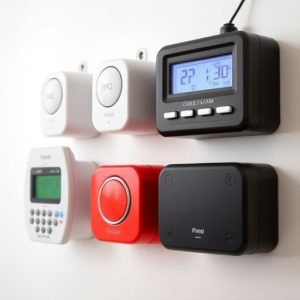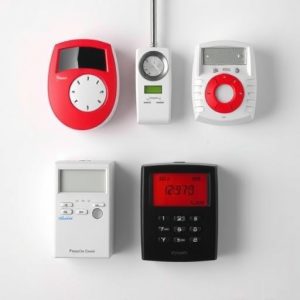Discrete Wearable Alarms: Range, Safety, & Benefits Unveiled
Discrete wearable security alarm systems offer powerful personal protection, featuring a controllabl…….
Discrete wearable security alarm systems offer powerful personal protection, featuring a controllable Panic Alarm Sound that can travel up to 500 feet (152m) while minimizing daily disruption. These devices, worn as necklaces or bracelets, transmit location data and distress signals to pre-set contacts or emergency services, providing peace of mind during travel or in unfamiliar areas. Their high-decibel alarm sound, designed for optimal reach in open spaces, is tailored to grab immediate attention, making them ideal for solo individuals seeking rapid assistance.
Discrete wearable security alarm systems, often referred to as personal panic alarms, are innovative devices designed to enhance individual safety. These compact yet powerful tools emit a high-decibel panic alarm sound, effectively deterring potential threats and drawing attention for help. This article delves into the intricacies of these systems, exploring their key components, carry distance capabilities, diverse applications, and essential safety considerations. Understanding the power and limitations of panic alarm sounds is crucial in leveraging their protective benefits.
- Understanding Discrete Wearable Security Alarm Systems
- Key Components of a Panic Alarm System
- How Far Can Panic Alarm Sounds Carry?
- Benefits and Applications of Discrete Wearable Alarms
- Safety Considerations and Best Practices
Understanding Discrete Wearable Security Alarm Systems
Discrete wearable security alarm systems are designed to offer personal protection with minimal impact on daily life. Unlike traditional alarms that are often stationary, these innovative devices are compact and lightweight, allowing users to carry them discreetly. When activated, they emit a powerful yet controllable Panic Alarm Sound at a distance, ensuring immediate attention in case of an emergency. The sound is adjustable, providing flexibility for different environments without causing undue disturbance.
This type of system incorporates advanced technology to convey location data and distress signals to pre-set contacts or emergency services. Carrying a discrete wearable alarm offers peace of mind, especially during travel or when alone in unfamiliar places. Its compact design enables users to wear it as a necklace, bracelet, or even integrated into clothing, making it virtually unnoticeable yet constantly ready to protect.
Key Components of a Panic Alarm System
Panic alarm systems are designed to provide immediate and effective protection, featuring several key components that work together seamlessly. At the heart of any discrete wearable security alarm system is a compact yet powerful activation mechanism. This often takes the form of a small button or sensor incorporated into a wearable device like a bracelet or pendant. When pressed, this trigger sets off an alarm sequence, signaling potential danger.
The alarm itself is characterized by its distinct and loud Panic Alarm Sound, designed to attract attention quickly. The range at which this sound can carry is crucial—it should be sufficient to alert people nearby, whether indoors or outdoors, within a safe Carry Distance. Advanced systems may also incorporate additional features like GPS tracking for precise location identification, ensuring swift response from emergency services.
How Far Can Panic Alarm Sounds Carry?
Panic alarm sounds are designed to be loud and attention-grabbing, but their carry distance can vary significantly based on several factors. In ideal conditions, a high-quality panic alarm sound can travel up to 500 feet (approximately 152 meters) or more in open spaces like parks, fields, or even some urban areas with minimal obstructions. This range ensures that the alarm is heard by those nearby who might be able to assist or respond quickly.
However, in densely populated urban environments with tall buildings and narrow streets, the carry distance can be considerably reduced due to sound absorption and reflection from structures. Factors such as terrain elevation, weather conditions (rain or wind can dampen sound), and background noise level also play significant roles in determining how far a panic alarm sound can actually travel.
Benefits and Applications of Discrete Wearable Alarms
Discrete wearable security alarm systems offer a unique and innovative approach to personal safety, providing users with a discreet yet powerful tool to protect themselves in various situations. One of the key advantages is their ability to emit a high-decibel panic alarm sound that can alert nearby individuals or authorities when activated, ensuring swift response times. The carry distance of these alarms is another significant feature; they are designed to be portable and lightweight, allowing users to wear them comfortably without drawing unnecessary attention.
These wearable alarms find applications in diverse scenarios. For individuals living alone or those with health concerns, a discrete alarm can provide peace of mind, offering rapid assistance in case of emergencies. They are especially useful for women walking alone at night or during outdoor activities, giving them the power to deter potential threats and attract help instantly. Additionally, these alarms can be beneficial for elderly individuals who may need assistance without being able to reach a traditional phone quickly.
Safety Considerations and Best Practices
When it comes to discrete wearable security alarm systems, safety considerations are paramount. These devices are designed to provide peace of mind and immediate assistance in case of emergencies, but their effectiveness depends on proper use and best practices. One critical aspect is ensuring the panic alarm sound is distinct and loud enough to attract attention without causing distress to others. The carry distance of the signal should also be taken into account; it needs to be powerful enough to reach help or emergency services, typically ranging from 50 to 200 meters, depending on the environment.
Best practices include regularly testing the alarm system to ensure its functionality and ensuring wearers know how to activate it quickly in an emergency. Discreet wearables should complement existing security measures rather than replace them; combining these devices with visible security badges or signals can enhance overall safety. Additionally, regular training on usage and awareness of local emergency response procedures can significantly improve the system’s effectiveness during critical situations.
Discrete wearable security alarm systems, with their compact design and powerful yet subtle panic alarm sounds, offer enhanced personal safety in various settings. Understanding key components like sensors, activation mechanisms, and transmission methods ensures effective deployment. The carry distance of panic alarm sounds, typically up to 50 meters in ideal conditions, makes them suitable for both indoor and outdoor scenarios. Benefits include discreet self-protection during travel, workouts, or daily commutes, while safety considerations emphasize responsible use and awareness of local regulations. By following best practices, individuals can leverage these innovative devices for greater peace of mind.


